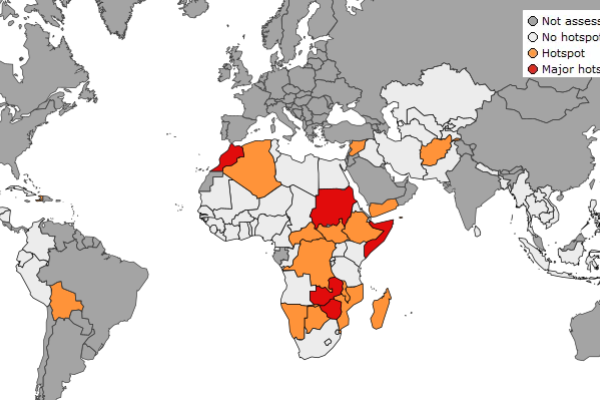
Two newly released JRC reports describe case studies of how crops developed through gene editing could become celiac-safe or resistant to disease and allow to reduce the use of pesticides. The two reports support the impact assessment accompanying the Commission’s proposal on legislation for plants produced by certain new genomic techniques.
These techniques, unlike the introduction of genes from a different organism in a recipient plant that we have seen so far in GMOs, apply a different type of genetic modification: either editing some genes out, or introducing others that come from the same plant or from a close relative. The latter is known as cisgenesis. These genes could also be transferred by traditional breeding techniques, but the new techniques make this happen faster, and with higher precision.
The legislative proposal is part of the food and biodiversity package, put forward today in contribution to the transition to sustainable food systems which is an integral part of the European Green Deal.
Editing out the genes responsible for celiac disease
The first report, Socioeconomic impact of low gluten, celiac-safe wheat developed through gene editing, focuses on the benefits that people suffering from gluten intolerance could obtain if a low-gluten, celiac-safe wheat would be available on the market. This crop has been developed by the Spanish National Research Council (CSIC) and by the Wageningen University & Research (WUR).
In the absence of celiac-safe wheat in the market, gluten intolerant population needs to follow a lifelong gluten-free diet to avoid undesired health effects. The JRC report gives a detailed description of the low-gluten, celiac-safe wheat developed in the EU. Wheat with such properties can be developed with gene editing through inactivation or elimination of the protein fragments that trigger celiac disease in genetically predisposed individuals.
The editing targets the genes for gliadin-type gluten proteins, leaving the genes for glutenin-type gluten proteins that are responsible for the food technological and dough-making qualities of wheat largely undisturbed.
What are the advantages?
- Health impact: Genetically modified gluten-free wheat products allow gluten-intolerant population to keep consuming wheat products. Following a 100% gluten-free diet can contribute to an imbalanced diet and whole grain wheat is considered a significant component of a healthy diet. Therefore, having access to low-gluten wheat can remove the undesired effects of a gluten-free diet.
- Economic impacts:
- For EU consumers: Gluten-free products are 200% more expensive than their gluten-containing counterparts, therefore having access to a low-gluten wheat would be cheaper alternative for those following a celiac-safe diet.
- For EU farmers: the farm gross margin could increase, on average, by 30% per hectare compared to conventional wheat for this specific niche market product.
- For the entire EU agri-food system: the EU could increase the export volumes of its gluten-free wheat in the range of EUR 0.5-2.6 billion.
Applying cisgenesis: selecting and crossing plants, faster and with more precision
The second report, Economic and environmental impacts of disease-resistant crops developed with cisgenesis, focuses on plant varieties the gene editing of which has made them disease resistant, therefore allowing for a reduction in pesticide use. In particular, the authors consider an apple variety resistant to scab and a potato variety resistant to late blight.
The results suggest that new genomic techniques such as cisgenesis likely lower the development costs, and speed up the breeding, for durable resistances through stacking of resistance genes. Cisgenic plants are similar to traditionally bred plants: cisgenesis modifies the recipient plant with a natural gene from a crossable, sexually compatible plant, thus close to how humans have been improving grains, fruits and vegetables for millennia.
The adoption of such varieties could provide direct economic benefits to farmers and enable crucial benefits to the environment through lower pesticide use thus contributing to achieving the pesticide reduction target without putting at risk the production of these crops in Europe.
In potatoes, the cisgenic variety may allow for reductions of fungicides by 50% to 80% under commercial conditions. In apples, the cisgenic variety may allow for reductions of fungicides by 12% to 58% depending on the region.
Describing new genomic techniques and their potential
Following a systematic literature review, the JRC developed a classification system by arranging the new genomic techniques into four groups based on the interaction of their active components with the genome.
Furthermore, as a guidance to the regulator, an overview of the possible genome alterations and their likelihood of occurring in nature or through conventional breeding was proposed. The study was performed for different kingdoms of living organisms, namely bacteria, fungi, plants and animals.
The JRC further carried out a detailed study focusing on the detection of food and feed plant products obtained by targeted mutagenesis and cisgenesis. The results and challenges linked to analytical testing are displayed in a comprehensive report recently published.
Background
The Commission's proposal today puts forward a Regulation on plants obtained by certain new genomic techniques and their food and feed, and amends Regulation (EU) 2017/625.
Related links
Commission proposal on plants obtained by certain new genomic techniques
Frequently Asked Questions: Proposal on New Genomic Techniques
Socioeconomic impact of low gluten, celiac-safe wheat developed through gene editing
Economic and environmental impacts of disease -resistant crops developed with cisgenesis
New Genomic Techniques: State-of-the-Art Review
Current and future market applications of new genomic techniques
Details
- Publication date
- 5 July 2023
- Author
- Joint Research Centre
- JRC portfolios




